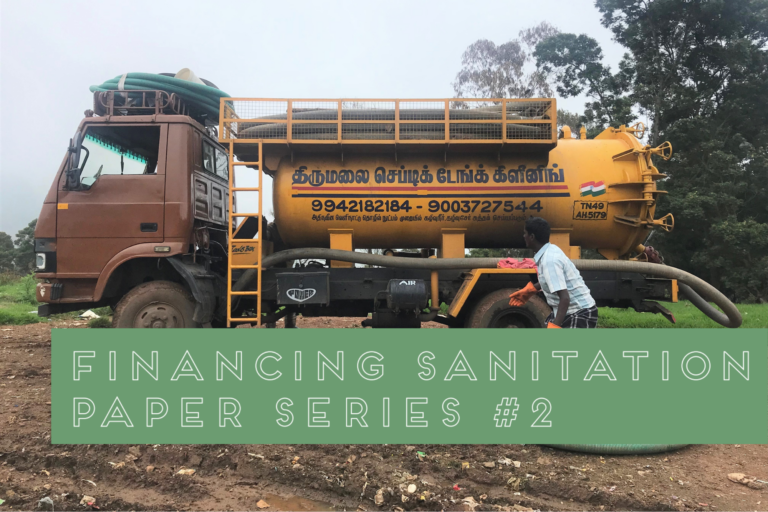The essence of public and private funding for sanitation
Also in this paper we write about themes that are new in the context of sanitation financing. We focus on the first part of the entire sanitation chain, i.e. awareness creation of the need for a toilet, demand generation, capacity building of stakeholders and (leading to the) construction of safe toilets. In the sanitation chain these are followed by collection and transport of faecal matter, safe disposal and/or treatment for reuse of excreta.
This paper is very close to our daily practices as it is written purely on the basis of our experience, insights and materials developed in a number of public and privately financed in our sanitation programmes in Ethiopia, India, and Kenya. This is the reason why you will find no references in most of our articles.
Finally, to be able to finance sanitation sustainably, we need to work together, build innovative partnerships and share knowledge.
Financing sanitation paper series
The Financing Sanitation Paper Series is a unique collection of six articles about different aspects of sustainable financing of sanitation (in emerging markets) – from financial inclusion to private funding and from micro insurance to climate financing.
You will find that many of the themes we write about are new in the context of sanitation financing. We are not only talking about sanitation financing but have taken a broader scope of financial inclusion. The idea of not having a toilet is perhaps as outlandish to many as the idea of not having a bank account or not being insured or not having any arrangements at all for old age, or more in general not being able to access financial services. Yet for many people having no toilet and being financially excluded are the reality. Financial inclusion can be facilitated by Governments, but as a rule it is left to market forces. Sanitation having a direct impact on public health has a much stronger Government influence, but does sanitation assets need to paid fully by Governments or donors? I do not think so. After all when people pay for something themselves they tend to appreciate it more than when it is a gift, yet there are some people who are too poor to pay. Dealing with this diversity is what financial inclusion is all about.

